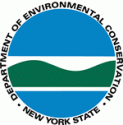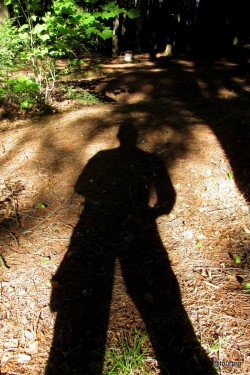Council also approves its Consolidated Funding Application (CFA) Endorsement Standard and its Public Participation Plan
The North Country Regional Economic Development Council met today and conducted its third meeting, which was open to the public. The meeting at SUNY Potsdam was attended by Lt. Governor Robert Duffy and led by North Country Regional Economic Development Council co-chairs Garry Douglas, President of the North Country Chamber of Commerce, and Anthony Collins, President of Clarkson University.
During today’s session, the Council presented and adopted its vision statement, which is intended to guide the council’s long-term strategic planning process moving forward. The vision statement can be found on the North Country Regional Economic Development Council’s website at www.northcountryopenforbusiness.com and is as follows:
“The North Country will lead the Economic Renaissance of New York State’s Small Cities and Rural Communities by:
- Energizing our micropolitan cities, building on growth in the aerospace, transit equipment, defense, biotech, and manufacturing industries
- Attracting and nurturing entrepreneurial pioneers to cultivate innovative clusters in our rural communities
- Mobilizing the creativity, capacity and graduates of our outstanding and collaborative places of higher education
- Catalyzing the highest per capita rate of small business start-ups in the state
- Elevating global recognition of the region as one of the special places on the planet to visit, live, work and study
- Activating tourism as a pathway to diversify our economies
- Propagating an agricultural revolution as we help feed the region and the world
- Creating the greenest energy economy in the state
Actualizing this vision will create family-sustaining jobs and build an inventive economy, capitalizing on our abundant natural capital – pristine waters, productive forests and agricultural lands; the rare splendor of the Adirondacks; and our dynamic international border.”
“The vision statement drafted for the North Country Region is bold, comprehensive and inclusive,” said Anthony Collins, Co-Chair of the Regional Council and Clarkson University President. “Taking action on the statement is a strong indication that the region can rapidly reach consensus views to drive our strategies, which bodes well for the future of the Council and the region.”
“The vision statement we are putting forward truly captures the great diversity of assets and opportunities of our unique region,” said Garry Douglas, Co-Chair of the Regional Council and President of the North Country Chamber of Commerce. “It also represents an important piece of the multi-faceted economic development plan for the North Country, which is starting to come together through our working groups. With the work of all of our volunteers and the upcoming input we will be welcoming through our public forums and other means, I expect us to see an exciting strategy come together over the next several weeks.”
In addition, the council detailed and approved its public participation plan, which includes: public comment period during regular scheduled council meetings; a series of public forums; the use of the council’s website, www.northcountryopenforbusiness.com, to provide information to the public about the council, its members, meetings, its strategic plan, as well as surveys to seek public input; and the use of social media, among others. A Facebook page has been created, “North Country Open for Business”, to amplify the council’s message, to engage regional community stakeholders and encourage public participation in the development of strategies and initiatives to promote growth and economic development in the North Country.
The North Country Regional Economic Development Council will be holding three public forums around the region that get underway today. They are as follows: Monday, September 12, Plattsburgh; Wednesday, September 14, Tupper Lake; and Monday, September 19, Watertown. The Council’s goal is to integrate the public into the strategic planning process to design an economic development plan that reflects the local communities’ vision for job creation and economic opportunity. The Council encourages public participation and feedback through outreach, community meetings, forums, and online at www.northcountryopenforbusiness.com.
The Council also adopted its Consolidated Funding Application (CFA) Endorsement Standard, which will serve as a guideline for the review and ranking of future applications. By developing these endorsement standards early in the regional council’s strategic planning process, applicants can take them into account when preparing applications.
The next regular scheduled North Country Regional Economic Development Council will be Friday, September 30 at SUNY Potsdam.
The North Country Regional Council, which is comprised of a diverse group of 30 area leaders from the private and public sectors, labor, chambers of commerce, higher education, and community-based organizations, is working to create a five year strategic plan for economic development in Clinton, Essex, Franklin, Hamilton, Jefferson, Lewis and St. Lawrence counties.
Created by Governor Cuomo, the Regional Economic Development Councils represent a fundamental shift in the state’s approach to economic development—from a top-down development model to a community-based approach that emphasizes regions’ unique assets, harnesses local expertise, and empowers each region to set plans and priorities.
The North Country Regional Economic Development Council is one of ten regional councils across New York that will serve as a single point of contact for economic activity in the region. Through their strategic planning process, the Councils will identify and expedite priority projects that demonstrate the greatest potential for job growth. As part of the initiative, up to $1 billion in state resources will be accessible to eligible economic development projects through existing program grants and tax credits.
Each Regional Council will develop a plan for the development of their region, which will provide a regional vision for economic development, address critical issues and opportunities, and lay out an implementation roadmap for future growth. The state will work with the Regional Councils to align state resources and policies, eliminate unnecessary barriers to growth and prosperity, and streamline the delivery of government services and programs to help the Regional Councils carry out their plans for development.

 The U.S. Fish and Wildlife Service, Vermont Department of Fish and Wildlife, and New York State Department of Environmental Conservation will be treating the delta complex at the mouths of the Little Ausable and Ausable rivers, and the Boquet River, Mount Hope Brook, and Putnam Creek in New York. The Poultney River, which borders both states, including its Hubbardton River tributary in Vermont, will also be treated. Treatments are scheduled to begin with the delta complex in New York on September 7th. Lake level and weather conditions may affect scheduling and could result in the last treatment extending into October. These treatments are part of the Cooperative’s long-term sea lamprey control program for Lake Champlain. While trout and salmon populations of the lake are the primary beneficiaries of these efforts, lake sturgeon, walleye, and many other species also profit from sea lamprey control.
The U.S. Fish and Wildlife Service, Vermont Department of Fish and Wildlife, and New York State Department of Environmental Conservation will be treating the delta complex at the mouths of the Little Ausable and Ausable rivers, and the Boquet River, Mount Hope Brook, and Putnam Creek in New York. The Poultney River, which borders both states, including its Hubbardton River tributary in Vermont, will also be treated. Treatments are scheduled to begin with the delta complex in New York on September 7th. Lake level and weather conditions may affect scheduling and could result in the last treatment extending into October. These treatments are part of the Cooperative’s long-term sea lamprey control program for Lake Champlain. While trout and salmon populations of the lake are the primary beneficiaries of these efforts, lake sturgeon, walleye, and many other species also profit from sea lamprey control. This year, for the first time in the Lake Champlain Basin, a second lampricide, Bayluscide 20% Emulsifiable Concentrate, is being included in the application on the Boquet River. The use of 1% Bayluscide with TFM reduces the amount of TFM needed by about 40%, resulting in a reduction of total lampricide applied and substantial cost savings. The delta area around the Little Ausable River and Ausable River mouths will be treated with Granular Bayluscide: lampricide-coated sand grains that dissolve after sinking to the bottom where they effectively kill sea lamprey larvae.
This year, for the first time in the Lake Champlain Basin, a second lampricide, Bayluscide 20% Emulsifiable Concentrate, is being included in the application on the Boquet River. The use of 1% Bayluscide with TFM reduces the amount of TFM needed by about 40%, resulting in a reduction of total lampricide applied and substantial cost savings. The delta area around the Little Ausable River and Ausable River mouths will be treated with Granular Bayluscide: lampricide-coated sand grains that dissolve after sinking to the bottom where they effectively kill sea lamprey larvae. The treatments and water use advisories will have no effect on most residents in the Champlain Basin and no municipal water supply systems will be affected. Cooperative staff have identified all landowners with property in the affected areas. A letter was sent to residents informing them of the planned treatment and asking them if they or their livestock use water from a surface supply that will be affected by the treatment. Days before the treatments begin, another letter will be sent to inform residents of the impending treatment and to arrange any water usage accommodations.
The treatments and water use advisories will have no effect on most residents in the Champlain Basin and no municipal water supply systems will be affected. Cooperative staff have identified all landowners with property in the affected areas. A letter was sent to residents informing them of the planned treatment and asking them if they or their livestock use water from a surface supply that will be affected by the treatment. Days before the treatments begin, another letter will be sent to inform residents of the impending treatment and to arrange any water usage accommodations.


